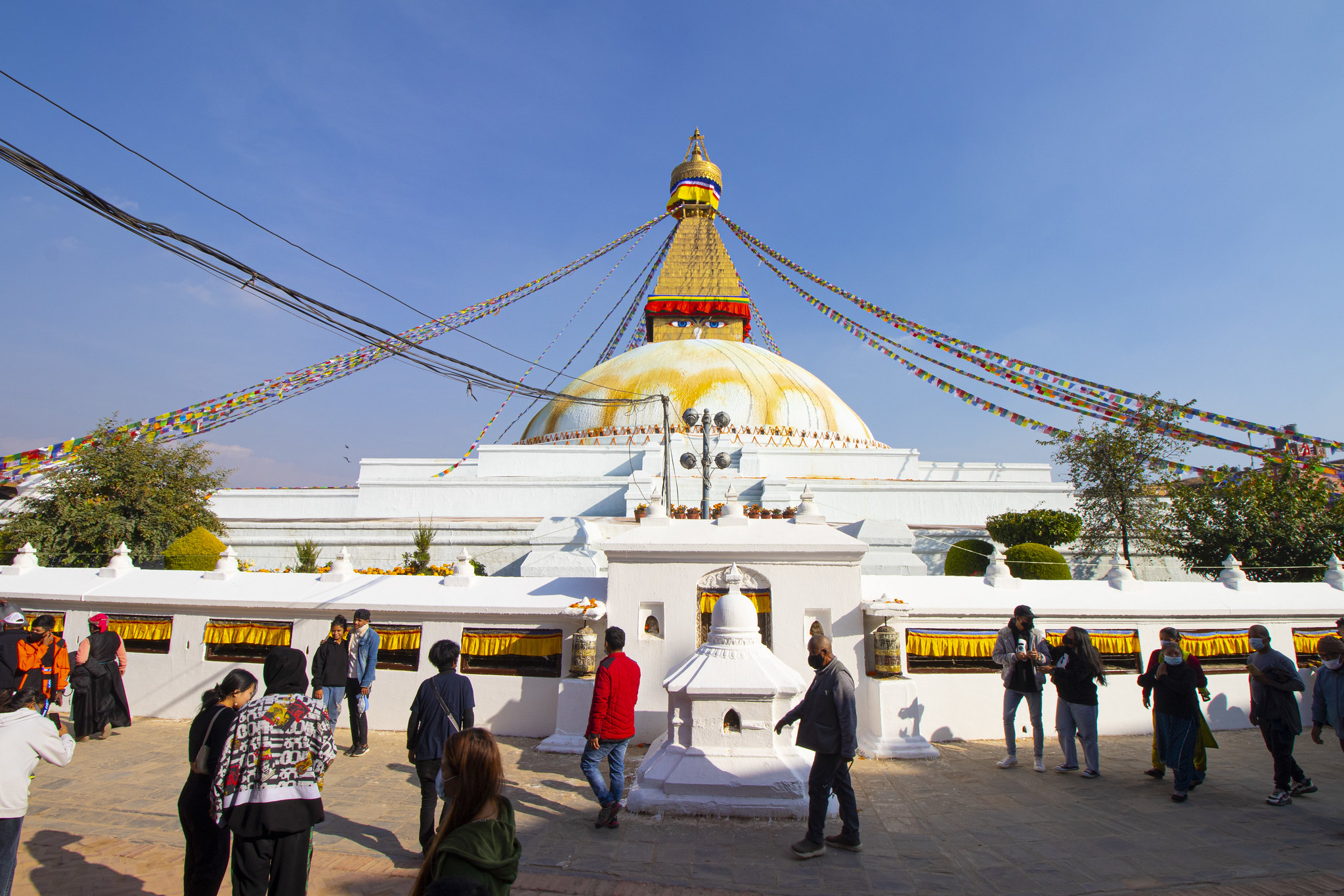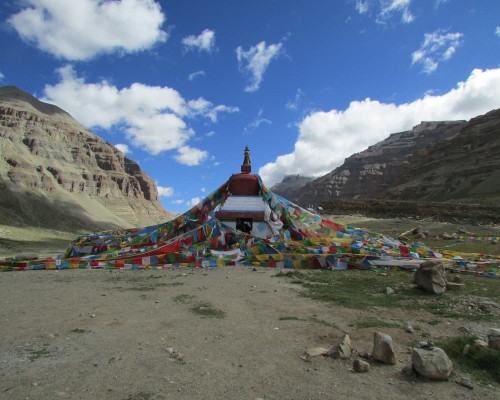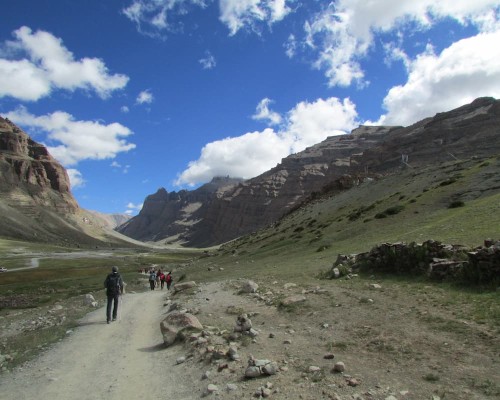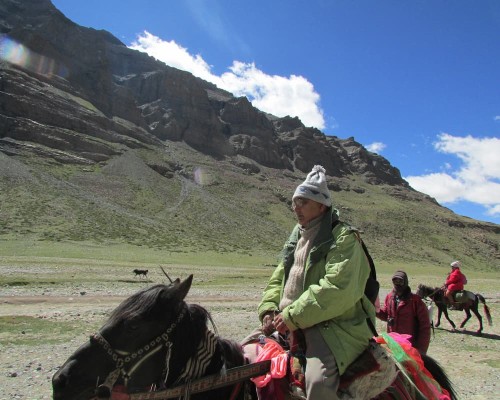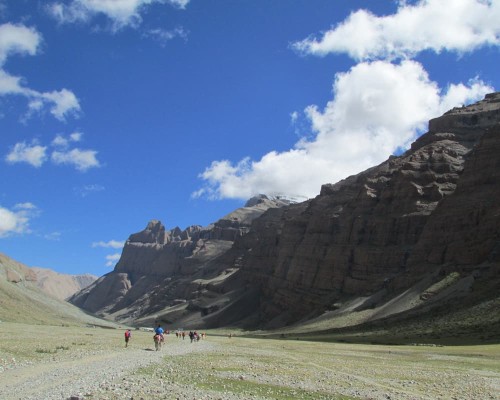Difficulty Level of Kailash Tour
If you’re planning for the sacred tour of Kailash Mansarovar with your friends and family, it’s great to research the tour completely. However, many pilgrims are confused to book this life-changing trip or not because of its difficulty level. Now, this information will help you to make decisions wisely.
The Kailash journey is one of the most challenging and strenuous journeys in the autonomous region of China,Tibet. Undoubtedly, the Kailash Mansarovar Tour is a journey of a lifetime! However, the journey includes three days of expedition encircling the divine Mount Kailash – a main demanding walk-in rugged wilderness Himalayan Region. Otherwise, the journey is fully drive-through. Before embarking on this pilgrimage tour to Kailash, make sure to be physically and mentally fit because the difficulties may arise due to many factors such as weather patterns, lack of modern amenities, challenging landscape, and the elevated altitude heightening the vulnerability to altitude sickness.
Despite hurdles, every year, thousands undertake the Kailash Mansarovar Yatra successfully, experiencing minimal issues. With adequate preparation and knowledge, you can guarantee a safe travel on this memorable journey.
Best time to do Kailash Yatra
Usually, the best time to do the Kailash Mansarovar Tour is between June and September, however, the peak season falls during July and August. These months offer perfect weather conditions, sunny days, longer daylight hours, and crystal-clear sky making it the supreme time to undertake the religious tour.
Nevertheless, during July and August, there's a chance of experiencing unfavourable weather conditions such as rainfall and landslides, which can add an extra layer of challenge to the journey. Despite this, the experience is captivating as you see the magnificent beauty of the Tibetan landscape, with its luxuriant green meadows and stunning snow-capped mountains.
In September, after the rainfall, the skies clear up, granting great visibility, although the weather is likely to be cooler and the days shorter. however, this time presents an exceptional opportunity to delve deeper into the magnificence of Mount Kailash. It's crucial to prepare for colder temperatures by carrying warmer clothes during this period.
From October to May, we strongly advise not to plan a tour due to unpredictable weather conditions and heavy snowfall, making the Kailash Mansarovar Journey unsuitable.
However, it's worth noting that above mentioned time and season are the optimal times for the pilgrimage tour to Kailash. Pilgrims have the flexibility to choose their preferred dates. To avoid the crowds typically present during full moon dates, we recommend selecting regular departures. Additionally, for larger groups, we offer flexibility with departure dates. Don't have a group? No worries! You can choose your preferred date and join our fixed departures organized by our company.
Essential Permit for Kailash Tour
Mount Kailash Lake Mansarovar Tourtakes you to Tibet, the beautiful landmarks of China situated in the autonomous region. However, the pilgrims planning for the Kailash trip require a Chinese visa and a Tibet Travel Permit. All of the necessary permits can be organized by the agency you are relying on. Look out for the listing of permits required to travel in Tibet:
Tibet Travel Permit
- Alien’s Travel Permit
- Military Permit
- Foreign Affairs Permit
- Inner Line Permit
If you are planning to enter Tibet from China, you need to obtain a Chinese visa by applying to the Chinese embassy or consulate in your country of residence. If you are planning your journey to Mount Kailash from Nepal, you need to apply for a Group Visa from the Chinese Embassy in Kathmandu. However, all those will be arranged by the company in Nepal. There wouldn’t be any sort of problems with obtaining visas and permits.
Additionally, Indian citizens should obtain a Chinese Visa and Tibet Travel Permit for the Tibetan Autonomous Region (TAR).
Accommodation during the Kailash Tour
Mostly, the pilgrims are concerned about whether the accommodation during the Kailash Tour is well managed or not. Here’s a comprehensive guide on the topic everyone is willing to know. Generally, the Mt. Kailash Tour commences from the capital of Nepal, Kathmandu – travellers opt for comfortable 4-star hotels or guesthouses furnished with modern conveniences, which guarantee an amusing beginning to their journey.
Generally, lower altitudes provide amenities like bathrooms, Wi-Fi access, and qualitative dining options. However, as altitude gets higher in remote, rough terrain, accommodation options become scarcer. In such higher-elevated regions, guesthouses or teahouses along trekking routes offer basic facilities of twin-sharing rooms, comfy beds and important furniture for a comfortable overnight stay.
En route to Tibet, simple yet comfortable lodgings are available in towns. During the Kailash Parikrama, travellers stop at guesthouses or teahouses along the path, providing an authentic absorption into Tibetan culture and traditions.
In Zuthulpuk and Dirapuk, guesthouses provide great comforts for a peaceful night's rest after an exhausting walk of 6-7 hours. Throughout the Kailash trip, our carefully selected accommodations prioritize comfort while fulfilling the cultural and natural splendour of the region, drawing a pilgrimage that is memorable and spiritually enhancing.
Foods During Kailash Tour
We carefully planned the Kailash Tour ensuring dietary preferences, restrictions and special requirements which will be suitable for every traveler around the world. During the Kailash Mansarovar Tour, vegetarian food will be served combining Indian and other foods as well. In Kathmandu, your accommodations will include delicious breakfast options to commence the beautiful day. En route to Tibet, you’ll be served three meals a day including a varied taste of Tibetan, Chinese, Indian, Nepali and Western cuisines. During the Kailash Parikrama of three days, you will be served three meals (Breakfast, Lunch and Dinner) likewise, and all the foods will be cooked by our chef to maintain hygiene level. Here’s detailed information about foods during My. Kailash trip:
In Breakfast:
- Fresh fruits (apples, bananas, oranges, etc.)
- Eggs (boiled, scrambled, or omelettes) with toast or chapatis
- Bread, butter, and jam
- Tibetan bread or chapatis with vegetable curry
- Breakfast cereals with milk or yoghurt
- Vegetable or cheese sandwiches
- Tea, coffee, or hot chocolate
- Herbal teas (ginger, lemon, mint, etc.)
Lunch:
- Sandwiches with various fillings (cheese, vegetables, cold cuts)
- Rolls with salads and protein (chicken, paneer)
- Fresh fruits (grapes, apples, oranges)
- Energy bars and granola bars
- Boiled eggs or egg salad
- Energy drinks or electrolyte beverages
- Fruit juices or bottled water
Dinner:
- Vegetable curry with rice or naan
- Dal (lentil soup) with rice or chapatis
- Noodles or pasta with vegetables or meat
- Tibetan dumplings (Momos) with dipping sauce
- Thukpa with vegetables or meat
- Fried rice or fried noodles
- Paneer or tofu dishes
- Seasonal vegetable salads
- Sautéed mushrooms or greens
- Desserts (fruit salad, sweet rice, or local sweets)
Physical Readiness for the Kailash Manasarovar Yatra
Embarking on the Kailash Mansarovar Yatra appeals to meticulous physical and mental readiness due to its numerous challenges and thrilling adventures. Generally spanning 6-7 hours of walking, this journey entails vigorous stamina and resilience. However, pilgrims should have to prepare themselves to tackle the challenges that arise on the highly elevated Himalayan Terrain for this remarkable expedition.
The Kailash tour can be completed successfully if the pilgrims prepare themselves before 3 months. Focus on such exercises as: cardiovascular exercises, leg strengthening, hiking long hours, jogging, swimming and extracurricular activities. Make time for yoga and meditation which improve your flexibility, balance, and mental focus. Carry a heavy backpack and hike for some hours nearest your area. Engage in some activities like; running, cycling swimming etc. These activities will help you to reach the desired destination and return with an amazing lifetime experience.
Travel Insurance
Kailash Yatra is full of adventure and along the way, your journey gets exciting and a bit challenging. With these great adventures and challenges come probable risk factors such as altitude sickness, other unexpected events, unpredictable weather conditions, etc.
The risks involved during trekking are unforeseen, so it’s better to have travel insurance ready before booking the tour. All the visitors are required to provide a copy of their complete travel insurance policy to Eternal Himalaya. Crafted to address the distinct demands of this holy expedition, it will protect against, medical crises, and unexpected occurrences. Ensure your safety and tranquillity are a top priority as you immerse in the spiritual wonders that the Mount Kailash Tour has to offer.
Packing List for Kailash Mountain Tour
Travel Documents
- Valid Passport
- Nepal Visa
- 2 passport size photos
- Travel Insurance
- Chinese Visa
- Tibet Travel Permit
- Kailash Mansarovar Entry Permit
Clothing Items
Headwear
- Winter hats or caps for sun protection
- UV sun protection glasses
- Headlamp with extra battery
Handwear
- Lightweight gloves
- Heatproof gloves or mittens for cold
Bodywear
- Long-sleeve moisture-wicking tops
- Thermal layers for warmth
- Fleece or down jackets for covering
- Insulated pants for cold weather
- Waterproof and windproof jackets with head covering
- Water-resistant pants or joggers
- Quick-drying trekking pants (adjustable preferred)
- Lightweight shorts for warmer days
- Moisture-wicking underwear
- Thermal undergarments for added warmth
- Sports Bra (for women)
Footwear
- Warm thick socks
- Lightweight shoes/scandals
- Comfortable Trekking Boots
Trekking gear and Equipment
- Trekking poles for stability
- Backpack
- Day pack for basics
- Duffle bag (will be provided by the company)
- Rain covers for your bags and packs
- Thermal water bottle
- Crampons
- Large plastic bags and stuff sacks
- Face Masks
First Aid Kit and Medicines
- Antibiotics
- Painkillers
- Cough Lozenges
- Plasters, Bandages & Zinc Oxide Tape
- Foot Powder
- Skin-blister repair kit
- Antidiarrheal
- Altitude sickness drugs (only with prescription)
- Water purification tablets or water filters
- Earplugs
- Sunscreen Cream
- Lip Balm
- Insect Repellent
- Hand Sanitizer
- Wet Wipes/Baby Wipes
- Snacks, lightweight, high calorie (optional)
Toiletries Items
- Quick-dry towels
- Toothbrush
- Toothpaste
- Biodegradable bar soap
- Deodorant
- Nail clippers
- Small mirror
- Toilet papers
- Shampoo
- Conditioner
- Pads or Menstrual cups for women
- Shaving cream and razors for men
 Lhasa City Tours- 5 days
Lhasa City Tours- 5 days Lhasa and Chengdu Tour- 5 Days
Lhasa and Chengdu Tour- 5 Days Kailash with Everest Base Camp
Kailash with Everest Base Camp The Best Places to Visit in Tibet
The Best Places to Visit in Tibet Mount Kailash Manasarovar yatra
Mount Kailash Manasarovar yatra




 Kailash Overland Tour
Kailash Overland Tour Kailash Manasarovar Tour
Kailash Manasarovar Tour Kailash Yatra via Lhasa
Kailash Yatra via Lhasa